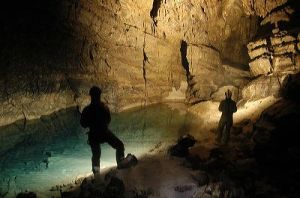For Brandon Kowallis the journey began in the late 1980’s deep in the Iowan forests of Maquoketa Caves State Park. There, at the base of a small outcropping of rock he and a couple of friends, for the first time in their young lives, entered the dark unknown. At that moment something happened that would change his life and the life of many others in the years to come. . . He caught the cave bug.
As the years rolled by this insatiable draw toward the unexplored, toward finding a place where no other human on earth had set foot, drove him to remote areas of the the United States in search of caves. In 1999 he joined the National Speleological Society and began working at Timpanogos Cave National Monument, while attending Utah Valley State College and Brigham Young University in pursuit of a degree in Photography.
Soon he discovered the multi-dimensional nature of caving and cave exploration. He, like many other cavers, discovered ways to bring his talents and interests underground, to bring something back to share with the world above.
I am hopelessly and forever a mountaineer. . . . Civilization and fever, and all the morbidness that has been hooted at me, have not dimmed my glacial eyes, and I care to live only to entice people to look at Nature’s loveliness.
-John Muir
Through his photography, Brandon has had the opportunity to lay down the first human footsteps and bring back images from caves throughout the U.S., Mexico, and Guatemala. His images have appeared in natural history museums, on national television, and in books and publications throughout the world.
No possessions are good but by the good use we make of them; without which wealth, power, friends, and servants, do but help to make our lives more unhappy.
– Sir W. Temple

While cave exploration is a major part of Brandon’s life he also believes in the importance of living a well-balanced life full of diversity and discovery. Besides exploring the world underground he enjoys spending time exploring his own religious beliefs, classical guitar, family history, filmmaking, website design, and most importantly spending time with family and friends.
Regarding caving and cave exploration Brandon says, “It is amazing how getting involved in something as simple as caving can shape a person’s life. It has given me a calm mind in the presence of danger always expectant of good, it has taught me to respect that natural world and all living things, it has made me patient in physical and mental adversity, and finally it has introduced me to some amazing and wonderful people.”







